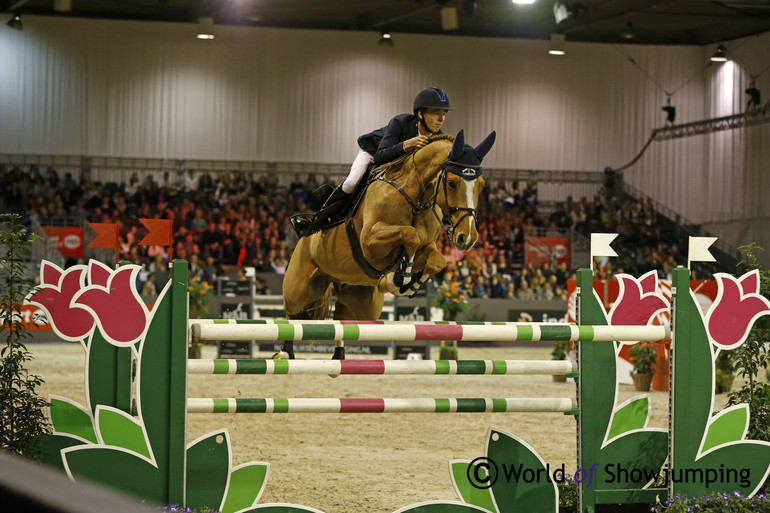The disqualification of Bertram Allen at Olympia last Monday, has been put into a legal perspective by barrister Mhairi Alexander. Alexander was the one helping Emma Phillips, owner of Bertram Allen’s horse Quiet Easy, to lodge the appeal after the Irish rider was disqualified. In a post shared on social media, Alexander sums up her experiences on how the appeal process was handled under the FEI rules. The FEI rules on protests and appeals can be found in article 163 and 165 of the FEI General Rules, which can be read here.
The rule used to disqualify Allen, 242.3.3.1 in the FEI Jumping Rules reads as follows:
“3. Mandatory Disqualification
3.1 Horses bleeding on the flank(s), in the mouth or nose or marks indicating excessive use of spurs or of the whip anywhere on the Horse (in minor cases of blood in the mouth, such as where a Horse appears to have bitten its tongue or lip, Officials may authorize the rinsing or wiping of the mouth and allow the Athlete to continue; any further evidence of blood in the mouth will result in Disqualification.);”
Following the disqualification, Allen and Phillips argued that the rule demands that the blood or marks are indicative of excessive spur use. “The mere presence of blood and or a mark alone is not enough to result in disqualification. There was nothing to indicate that there was excessive spur use (two experts provided statements to that effect which were lodged along with the appeal). The Ground Jury had therefore erred in their interpretation and application of the rule,” writes Alexander on why Allen and Phillips’ decided to appeal the Ground Jury’s decision.
But, even for a barrister the appeal process turned out to be challenging. Perhaps even more so because barristers expect certain norms and standards to guarantee that a fair legal proceeding can take place.
One such guarantee, is that there is sufficient time and facilities to prepare the case. The appeal process under the FEI rules did not facilitate for much preparation, as Alexander explains: “The first issue that riders should be aware of is that there is only 30 minutes from the start of the prize giving ceremony (not, as I would have imagined, the time at which the decision is conveyed to the rider) in which to mark the appeal. Clearly, anyone not familiar with the FEI rules is at a disadvantage, and being unaware of this rule in particular would leave a potential appellant time barred from being able to challenge the original decision at all.”
Alexander points out how a period of thirty minutes is not sufficient for any appellant to do a thorough job with submitting an appeal. Within half an hour, the appellant is supposed to “read the rule, consider whether it has been applied correctly, collect the form from the relevant office, gather all of the relevant FEI numbers together with the appropriate fee for doing so, and thereafter lodge the form with the relevant office, along with any supporting evidence,” writes Alexender referring to article 165 in the FEI Rules.
Furthermore, Alexander found the process to be far from an adversarial one. On behalf of Allen and Phillips, Alexander was not given the opportunity to get knowledge of nor comment on the observations and evidence submitted by the Ground Jury.
The appeal committee was convened approximately one hour later in order for parties to make submissions, explains the barrister continuing “Most curiously, parties make submissions in private, in consequence of which, while I addressed the panel for around 40 minutes, I had to do so without the benefit of having specifically heard what the Ground Jury’s position actually was. Perhaps one might argue that their position was obvious, however in the normal course of a debate the appellant would have the benefit of knowing the respondent’s detailed position in order to tailor the argument and ensure that their position was crystal clear. To that extent, the appellants were somewhat in the dark.”
A well known legal principle is that decisions adequately should state the reasons on which they are based. Alexander’s experiences illustrate how this was not the case with the Appeal Committee’s decision. “Finally, it is worth noting that the committee categorically declined to provide any explanation for the basis upon which they reached their decision. I urged them to do so in the interests of transparency, but yet they still declined. Further, they were unable to provide us with any information regarding further appeal procedure; they didn’t know,” writes Alexander. “Clearly, this makes it extremely difficult to take the process much further. It can be done, however again, the appellants are fighting an uphill battle.”
On the content of the so-called blood rule, Alexander comments: “For what it’s worth, I don’t think there is anything wrong with the rule as it stands. It is clearly designed to protect against abusive riding and that should be applauded. However, I do not think that it has been applied with that purpose in mind. It should therefore be redrafted to provide clarity, or the FEI should issue formal guidance as to how it wishes the rule to be interpreted. Rules are not just rules.”
In a brief comment to World of Showjumping, Quiet Easy’s owner Emma PhilIips says; “I would like to say that regardless of the outcome, I remain thrilled that Quiet Easy has proven himself as a five-star Grand Prix horse, and under Bertam Allen looks to have a great future.”
Text © World of Showjumping // Source: Facebook // Picture © Jenny Abrahamsson









